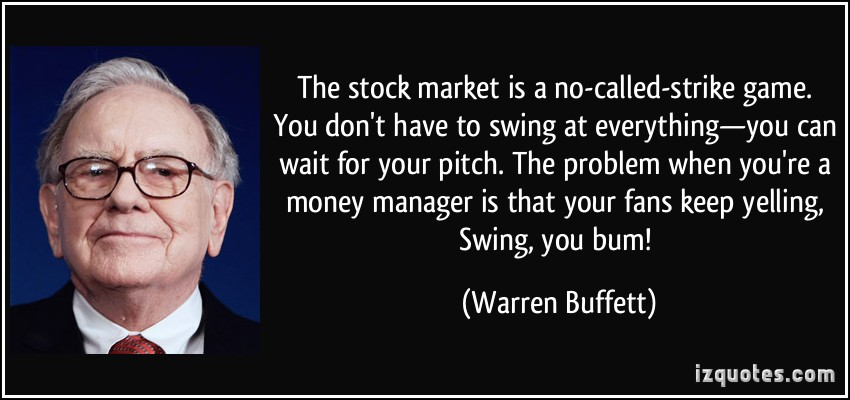Warren Buffet Approach
What can you say, one of the greatest investors of all time. He always seems to pick up a great deal. In fact, that is one of his mantras, find good companies that are distressed by current conditions, and get a great price. Then watch them grow forever! He is seldom a seller of stock.
Buffett loves a history of profitability (who does not). He uses the return on equity (ROE) ratio to gauge profitability and trends. In addition, uses return on invested capital (ROC) to kill any high-debt stocks, in his choices.
Return on equity is a company’s net income divided by shareholders equity (book value). Generally speaking, you will note a company can’t internally fund earnings growth faster than its ROE rate. Example: a company with an 11% ROE can’t grow earnings faster than 11% annually without raising additional money or often by selling shares or going into debt. Buffett does not like either of those (selling shares or debt to fund growth). Buffett likes low-debt companies. Even better is they are buying back shares (a sign of excess cash-therefore stability and forced appreciation-buying back shares often forces the value up).
Many money managers look for a minimum 15% ROE. Since Buffett is pickier than most, he looks for more up to 17%. If this screen cause to low a return (which it might) try reducing the threshold to get more stock candidates.
ScreeningParameter:ROE:5-yearAvg.>= 17%Watchreturnoncapital
Debt is a big deal to Buffett. Debt reduces shareholders’ equity. A high-debt company would have a higher ROE than one with minimal or no debt.
Therefore using, return on invested capital (ROC) removes debt out of the equation. You essentially add back shareholder equity before calculating the ratio. If Company A has no long-term debt, its return on capital would be the same as its return on equity. But for Company B, a high-debt company, ROC would be much lower than ROE. Another way of evaluating the strength of the company, and ability to grow using existing capital and assets.
A minimum 17% ROC can rule out high-debt companies. If you reduce your ROE requirement, you’ll also have to cut ROC by the same amount.
ScreeningParameter:ReturnonInvested Capital: 5-year Avg. >= 17%
Profit margins
Buffett looks for companies with above-average profit. Net profit margin is total
net income (bottom line income after all expenses) divided by total sales for the same period. For instance, a company would have a 10% net profit margin if it earned $15 million on sales of $150 million ($15 million divided by $150 million).
Be careful when evaluating margins, and net profits. Tax rates vary by company, and influence net numbers. Therefore messing up the real percentage. Best to use net income before deducting income taxes.
Buffetts likes stocks that have a five-year average pre-tax profit margin of at least 20% higher than industry average.
Screening Parameter: Pre-taxprofit Margin: 5-year Avg. >= 1.2* Industry Avg. Pretax Margin: 5-yearAvg.
Valuation
Buffett values stocks using a gauge he dubbed owner earnings, which is reported earnings with non-cash expenses such as depreciation and amortization added back in and capital expenses subtracted. A Buffett’s owner earnings are similar to the more familiar term free cash flow.
Buffett doesn’t want to overpay, and the price-to-cash flow ratio approximates his approach to valuing stocks. No more than 80% of the industry average.
Screening Parameter: Price/cash flowratio<=0.8*Industry Averageprice/cash flowratio
A positive ratio to rule out negative-cash-flow stocks. Screening Parameter: Price/cash flow ratio >=0.1Debt
Buffett dislikes high-debt companies, however the definition of high and low debt may vary by the industry (some industries have high debt to income ratios, due to the type of business they conduct). You can use the debt-to-equity ratio (long- term debt divided by shareholders equity) to measure company debt. Perhaps looking at a threshold for stock D/E to be no greater than 80% of an industry average.
Screening Parameter: Debt to Equity Ratio<=0.8*Industry Average Debt to Equity Ratio
Management quality
Buffett emphasizes picking companies with good to great management. Manyconsider this to subjective. But a good rule of thumb can be to evaluate the income per employee, which is a company’s net income divided by its employee count. Therefore, trying to objectively gauge of management based on performance. The higher the income per employee, the assumption the better the management. Buffett would likely consider a company that exceeds its industry average in that department by at least 10% to be a solid or well managed company.
ScreeningParameter:Incomeper employee >= 1.1* IndustryAverageIncome per employee

